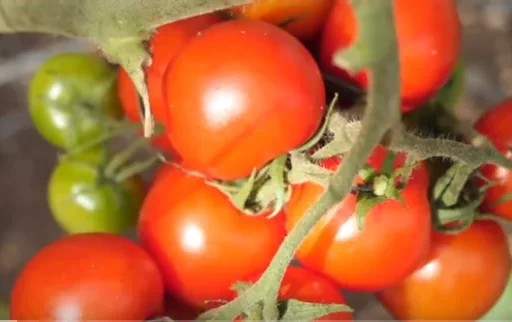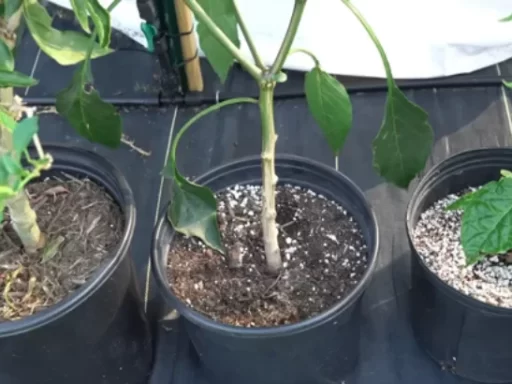Growing avocados in non-tropical regions can be a rewarding yet challenging endeavor. On the southeastern coast of North Carolina, I embarked on a five-year journey to cultivate my very own Leela avocado tree. This variety, known for its cold hardiness and smaller size, has finally borne fruit, and I couldn’t be more excited to share the experience with you.
The tree has faced challenges along the way, dropping its fruit for four consecutive seasons. This year, however, it successfully matured a single avocado, and the time has come to harvest it. In this article, I will take you through the entire process of growing this avocado tree, the joy of harvesting its first fruit, and the eventual taste test that exceeded all expectations.
The Leela Avocado: An Overview
The Leela avocado, sometimes also referred to as the Opal avocado, is a Mexican variety known for its cold tolerance. This semi-dwarf tree typically grows to about 12 to 15 feet but can be kept smaller through pruning, making it an excellent choice for backyard gardens in regions that experience frost.
One of the primary reasons I chose this variety over others, such as the larger and more popular Hass avocado, is its ability to withstand lower temperatures. The Leela avocado tree can tolerate temperatures down to about 12 to 15°F when fully mature, while the tree itself can survive in the low 20s with little damage.
Challenges in Growing the Leela Avocado
For the past four seasons, my Leela avocado tree has set fruit but dropped all of them before they could reach maturity. While I’m not entirely sure of the cause, I suspect that over-fertilization with nitrogen may have played a role. Nitrogen is essential for plant growth, but too much of it can sometimes cause fruit to drop prematurely.
This year, however, the tree held on to a single fruit, and I was thrilled to see it finally reach maturity. Despite some minor bug damage, it was ready to harvest.
Comparison with Other Avocado Varieties
The Leela avocado is a true Mexican variety, which makes it quite different from the Hass avocado that most people are familiar with. Hass avocados, which are Guatemalan varieties, are more commonly found in supermarkets because of their thicker skins, which make them easier to transport. On the other hand, Mexican avocados like the Leela have thin skins, making them more delicate and harder to ship.
When comparing the Leela avocado to the Hass, there are noticeable differences. The fruit is smaller, but it is said to have a higher oil content, which contributes to its superior taste. Additionally, the Leela’s cold tolerance is much better than that of the Hass, making it a better choice for regions with colder winters.
Harvesting the First Avocado
After five long years of waiting, the moment had finally arrived to harvest the first fruit from my Leela avocado tree. The avocado had been on the tree for several months, and I had been monitoring it closely. Unfortunately, some bugs had started to get into it, so I decided to pick it before any more damage could occur.
Once harvested, I left the avocado on my kitchen counter for a few days to ripen. Mexican avocados, including the Leela, are known for their high oil content and rich flavor, so I was eager to see how it would compare to the avocados available in grocery stores.
The Taste Test: A Rich and Creamy Experience
Finally, after a few days, the avocado was ready to eat. When I cut it open, I was greeted with a beautiful sight—the flesh was rich, creamy, and free from major blemishes. The only downside was a small oxidized spot where the bugs had gotten in, but that didn’t take away from the overall experience.
The taste of the Leela avocado was unlike any avocado I’ve ever had. It was much richer and creamier than the typical Hass avocado, with a nutty flavor and a hint of sweetness. The high oil content was immediately apparent, giving the avocado a luxurious mouthfeel. Even though I’ve eaten avocados my entire life, this was a completely new experience—like the difference between a homegrown tomato and a grocery store tomato.
Why the Leela Avocado is Worth the Wait
Growing avocados can be a test of patience, especially in regions where they aren’t typically grown. However, the Leela avocado has proven to be well worth the five-year wait. Not only is it more cold-tolerant than other varieties, but its flavor is unparalleled.
For those living in areas with frost and freeze, the Leela avocado is an excellent choice. It’s a semi-dwarf variety, making it easy to manage in small spaces, and it’s self-fertile, meaning you don’t need multiple trees for it to bear fruit. The fruits are also a good size for a Mexican avocado, and the pit releases easily, which is a bonus compared to other cold-hardy varieties.
Final Thoughts
If you’re looking to grow your own avocados and live in a region that experiences frost, the Leela avocado is an excellent option. It combines cold tolerance with superior flavor, making it a great choice for backyard gardeners. The tree is relatively low maintenance and can be kept at a manageable size with regular pruning.
There’s nothing quite like the experience of eating an avocado that you’ve grown yourself. While grocery store avocados can be good, they don’t compare to the flavor of a fresh, homegrown avocado. If you’re patient and willing to put in the effort, the Leela avocado will reward you with delicious, creamy fruits that are unlike anything you can find in the store.
Frequently Asked Questions
- How long does it take for a Leela avocado tree to bear fruit?
- It usually takes about 4 to 5 years for a Leela avocado tree to start producing fruit, depending on growing conditions.
- Can Leela avocados tolerate cold temperatures?
- Yes, the Leela avocado is known for its cold tolerance and can survive temperatures as low as 12 to 15°F when mature.
- Is the Leela avocado tree easy to grow?
- While it requires some care, especially in colder climates, the Leela avocado tree is relatively easy to grow and maintain.
- How does the Leela avocado compare to the Hass avocado?
- The Leela avocado is smaller and has a higher oil content than the Hass, giving it a richer flavor. It also has thinner skin, making it more delicate.
- How big does a Leela avocado tree get?
- The Leela avocado tree typically grows to about 12 to 15 feet but can be kept smaller through pruning.
- What makes Mexican avocados different from Guatemalan varieties?
- Mexican avocados, like the Leela, have thinner skin and higher oil content, while Guatemalan varieties, like the Hass, have thicker skin and are easier to transport.
- Can I grow a Leela avocado tree in a pot?
- Yes, the Leela avocado tree can be grown in a pot, but it will need to be pruned regularly to manage its size.






